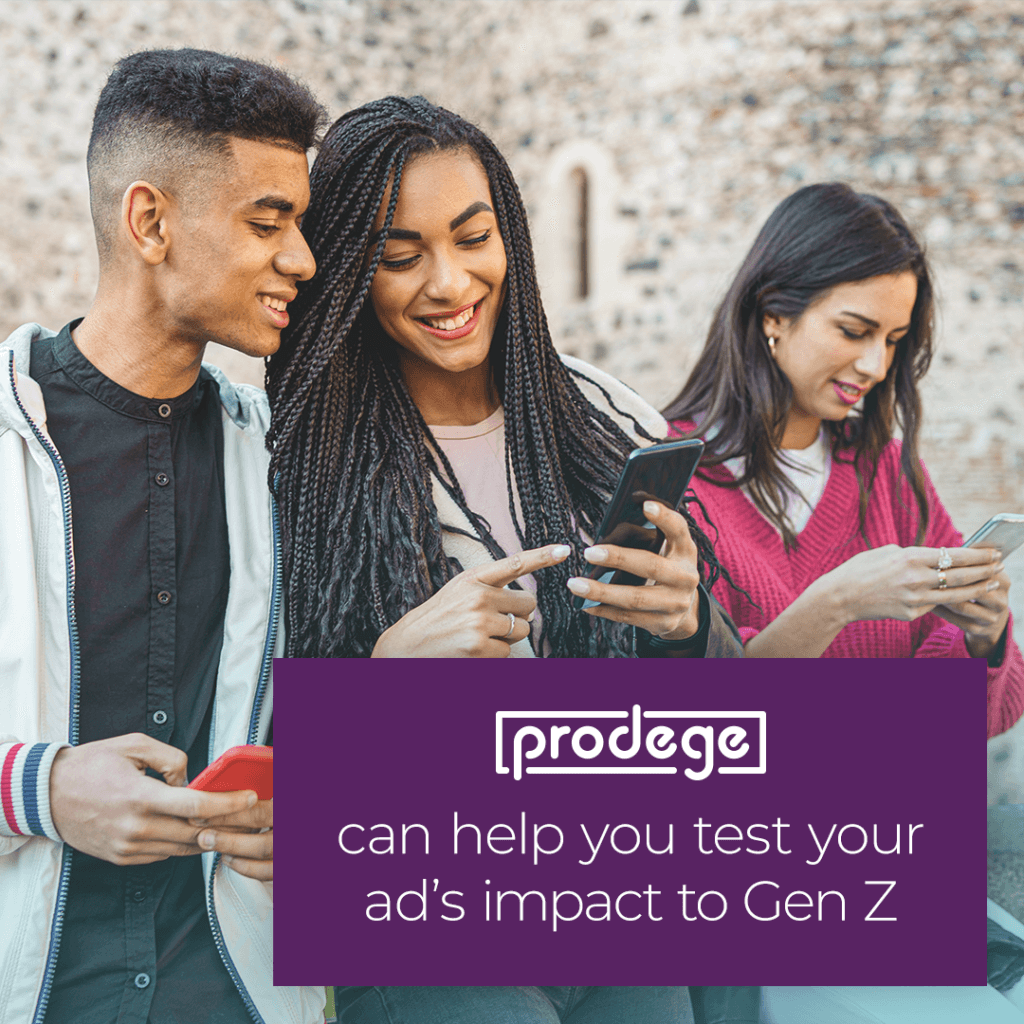Gen Z is still making headlines. Whether its side hustles, responsible consumerism, or why they want to be co-creators, there’s no doubt Zoomers have a lot of influence. Brands need to keep a close eye on how this generation continues to grow especially if they are looking to tap into their unquestionable buying power.
After our successful three-part series on Gen Z that included Move Over Millennials, Meet the Zoomers, What Do Gen Z Spend Their Money On?, and Putting Together the Pieces: How Do You Target Gen Z?, we decided to revisit this age group and go a little deeper into their values and language for a better chance of attracting Gen Z as customers.
Understanding the Values of Gen Z
Avocado-toast-eating, Netflix-chilling millennials get a lot of hype, but Gen Z is crashing the party. Young adults born after 1996, Generation Z (Zoomers) are true digital natives. They’ve never known a life without the Internet, and are huge into gaming, live streaming, and consumption for a cause. According to our verified purchase data, our Gen Z audience spent $1.2M on game-related purchases last year.
Gen Z is also leaning into slow fashion and responsible consumerism with 62% preferring to buy from ethical brands. Over half of Gen Z, 54%, are willing to pay for sustainably made products. This compares to 50% of Millennials, 34% of Generation X, and 23% of Boomers who are willing to pay more.
Sustainability isn’t a fad. Consumers are demanding brand transparency and are willing to pay more for ethically produced goods. As the quest for sustainability has increased with each subsequent generation, Generation Alpha (born 2010-2024) will likely show an even greater appetite for supporting transparent, green brands.
Additionally, climate change and social issues are big concerns for Zoomers, as they are the most racially diverse generation the US has ever seen; 48% of Gen Z cohorts are non-White. Our research shows that when viewing advertisements, Gen Z and Millennials are more likely to pay very or somewhat close attention to whether social responsibility and sustainability are emphasized (51-60%).
This is where our ad effectiveness testing can help brands looking to tap into this new generation and aren’t sure how. Our solution eliminates the guessing game so marketers can learn how their intended audience perceives an ad before it goes live, through A/B testing and different creatives.

With the internet at their fingertips, Gen Z has access to information 24/7 and that means keeping an eye on what big brands are doing; businesses that are winning at wooing Gen Z know what this generation values and thriving brands know how to relay their progressive, inclusive message in a way that resonates.
It’s all about speaking Gen Z.
How Do Zoomers Speak and Why?
Authenticity and uniqueness are important to this generation, which is why many Gen Zers are all about creating their own slang as part of their unique brand. When Gen Z speaks, they keep it real and they expect brands to do the same.
Gen Z is all about new meanings to existing words and setting mainstream trends in a low-key way. Many of these new meanings are value-conscious and all about authenticity. Generation Z is also resurrecting, on TikTok, a lot of old-school words rooted in African-American Vernacular English (or AAVE).
The Importance of Speaking and Understanding Gen Z
Brands and marketers that have knowledge of what young consumers want have a better likelihood of turning them into customers.
Companies aren’t running loads of ingenious campaigns using Gen Z slang. It’s about more honest communication. They’re tapping into social Influencers who are Gen Z. For example, Lululemon, Apple, and Nike are popular with Gen Z and have a firm hold on pop culture for all generations.
However, even brands that don’t come to mind as a “popular brand” are becoming clever with their marketing to Gen Z. Whirlpool, a current client, went viral on TikTok. One year after TikTok launched, Whirlpool created an account. Their video featuring a Whirlpool microwave exploded, spawning other user videos featuring Whirlpool microwaves. They capitalized on the #CleanTok hashtag that popularized videos with hacks for cleaning your home and home appliances.
Whirlpool is also looking ahead and learning about Gen Z’s desires when it comes to home design and appliances. Even our own Gen Z audience makes purchases from Whirlpool, with parts and accessories being the top items according to our verified purchase data.
Other brands that don’t seem “hip” are gaining momentum, too:
- freshly
- Marriott
- Travelocity
- Hostess
- Hefty
- Hertz
- Totino’s
- Old Spice
While younger Millennials started the trend of gravitating towards curated, aspirational images of your best self, Gen Z is about authenticity and being real. Gen Z gravitates towards brands that show real-world people, flaws and all, and that encourage others to do the same.
Bottom Line on Speaking to Gen Z
Stop thinking. Don’t figure out how to speak to Gen Z, just speak honestly. You need to convey your mission about how you’re working to create a brighter future and wearing your values on your sleeve.
A component of this means ensuring your message resonates with the right people in your target demographic.
And if you are interested in learning more about Gen Z slang, we’ve got you covered! Download our Gen Z Glossary so you can not only stay on top of their values but understand their language, too.
Gen Z Glossary Sneak Peek
Finna
Finna, according to the Gen Zs at my office, may be on its way out as youth slang. Finna is a way to say “I’m going to” or “I’m gonna”. It’s pronounced fin-UH. One could say, “I’m finna head out.”
While this is new language to me (a Millennial mom), the under 25 crew at my work assures me it’s a little played out. “I haven’t used ‘finna’ since high school. Wow that’s old.’
Cap
Cap means to lie, so if you say “no cap” it means you are being authentic or truthful. It’s always “no cap” in the singular and no “no caps” plural. If someone is lying, Gen Zs might say “nah, you’re capping!”.
High-key
High-key is simply the opposite of being low-key. High-key means you’re really into something whereas low-key means to be interested in a more casual, take-it-or-leave-it sort of way.
Cheugy
Cheugy is how Gen Zers make fun of Millennial styles and trends – like UGGS, high-rise skinny jeans, and side hair parts. Something that is dated and specifically Millennial is cheugy.
Even if you’re not doing everything right from a Gen Z lens, many successful brands have a roadmap about the progress they’ve made and where they’re headed in the future. Speaking Gen Z really isn’t about the slang, although understanding it is helpful. It’s about the journey. And the story of your journey. And inviting Gen Z to come with.
Prodege’s solutions help brands drive sales online and in store to engaged consumers. With 20% of our members falling in the Gen Z age group, your offers will be seen by all generations with our personalized marketing offers.
Contact us today to start a project!

Katie Crockford

Stacy Garrels
Share This Article
Recent Press Releases
Prodege Unveils Conversational AI Within Pollfish Platform, Empowering All Customers to Access Real Human Insights at ScaleEL SEGUNDO, Calif., May 21, 2025 (GLOBE NEWSWIRE) -- Prodege, a leading provider of consumer insigh [...]
FAA Cuts, Airline Incidents Spark Consumer Fear: 55% Report Rising Anxiety About Air TravelA new Prodege study reveals majority of travelers report increased anxiety about flying amid recent [...]
Prodege to Deliver Over $250 Million in Revenue to Mobile Gaming Clients in 2025 Through Rewarded User AcquisitionStrategic Team Expands to Assure Gaming Leadership EL SEGUNDO, Calif., Jan. 30, 2025 (GLOBE [...]









